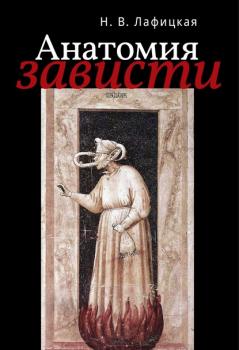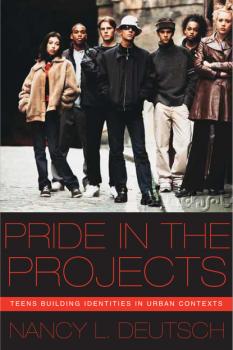ТОП просматриваемых книг сайта:
Социальная психология
Различные книги в жанре Социальная психология, доступные для чтения и скачиванияАннотация
Аннотация
В работе «Анатомия зависти» дана попытка анализа феномена зависти. Зависть рассматривается с разных точек зрения: психологической, философской, социальной, психосемантической, исторической, литературной. Многие приведенные факты публикуются впервые, используются интернет-данные. Зависть рассматривается как на микро-, так и на макроуровне. В книге разворачивается панорама этого сложного явления, позволяющая читателям сделать собственные выводы и заключения. Особый интерес вызывают предложенные автором рисунки добровольцев.
Книга является своего рода пионером в исследуемом поле и, несомненно, вызовет большой интерес, как у специалистов, так и у ценителей серьезной литературы.
В формате PDF A4 сохранен издательский макет.
Аннотация
In this second volume of his nuclear weapon series, John Clearwater continues to investigate the presence of American nuclear weapons in Canada. In Canadian Nuclear Weapons , Clearwater told the story of nuclear weapons that were in the hands of Canadian forces during the Cold War. In U.S. Nuclear Weapons in Canada , he goes further, looking at nuclear weapons held by American forces on Canadian soil. His purpose is to bring together until-recently secret information about the nature of the nuclear weapons stored, stationed, or lost in Canada by the United States Air Force and the United States Navy, and combines it with known information about the systems in the U.S. nuclear arsenal. The history of the atomic bomb in Canada goes back to the first years immediately after World War II when the U.S. government, under the prodding of the newly created Strategic Air command, began a slow and steady process of talks designed to allow Goose Bay to be groomed for the eventual acceptance of nuclear weapons. Crashes and nuclear accidents. Conspiracies and cover-ups. Clearwater examines them all in great detail. The reader will see for the first time the minutes of Cabinet and the Cabinet Defence Committee meetings in which the storage of nuclear weapons are discussed. Also printed here for the first time are the agreements between Canada and the U.S. for the storage of nuclear weapons. Many of the documents presented here were until recently classified as secret, and many were top secret.
Аннотация
A mood of anger with the political system has been stirring across Canada; yet rather than turning away from the system, many Canadians are actually seeking a greater say in matters that affect them. they want to become more effective participants in the political process. In this timely book, Patrick Boyer examines the important role that direct democracy – through the occasional use of referendums, plebscites, and inniatives – can play in concert with our existing institutions of representative democracy. This concept is not alien to our country, says Boyer, pointing to the two national plebiscites (on prohibition of alcohol in 1898 and consciption for overseas military service in 1942), some sixty provincial plebscites (on everything from sovereignty-association to abortion, medicare to women's suffrage, prohibition to ownership of power companies), and several thousand at the municipal level. Direct voting is an important instrument in a truly democratic society, Boyer argues, and it has a more important rold in the current reformation of Canada than some in the comfortable growing governing classes want to admit. In addition to clarifying an issue, it is an educational tool, as the plebiscite campaign becomes a national teach-in. Canadians can become participants, rathe rthan mere spectators, in the major changes and transcending isues that affect the future of our country. The People's Mandate is a helpful guide to understanding the distinctions between plebiscites and referendums in a purely Canadian context. It addresses some of the concerns about this unparliamentary practice, and makes a powerful and logical statement about democracy. In sum, Boyer believes it is essential to govern with the trust of the people.
Аннотация
Winner of the 2008 Outstanding Book Award by the Academy of Criminal Justice Sciences Michelle Oberman and Cheryl L. Meyer don’t write for news magazines or prime-time investigative television shows, but the stories they tell hold the same fascination. When Mothers Kill is compelling. In a clear, direct fashion the authors recount what they have learned from interviewing women imprisoned for killing their children. Readers will be shocked and outraged—as much by the violence the women have endured in their own lives as by the violence they engaged in—but they will also be informed and even enlightened.Oberman and Meyer are leading authorities on their subject. Their 2001 book, Mothers Who Kill Their Children , drew from hundreds of newspaper articles as well as from medical and social science journals to propose a comprehensive typology of maternal filicide. In that same year, driven by a desire to test their typology—and to better understand child-killing women not just as types but as individuals—Oberman and Meyer began interviewing women who had been incarcerated for the crime. After conducting lengthy, face-to-face interviews with forty prison inmates, they returned and selected eight women to speak with at even greater length. This new book begins with these stories, recounted in the matter-of-fact words of the inmates themselves.There are collective themes that emerge from these individual accounts, including histories of relentless interpersonal violence, troubled relationships with parents (particularly with mothers), twisted notions of romantic love, and deep conflicts about motherhood. These themes structure the books overall narrative, which also includes an insightful examination of the social and institutional systems that have failed these women. Neither the mothers nor the authors offer these stories as excuses for these crimes.
Аннотация
Teens in America’s inner cities grow up and construct identities amidst a landscape of relationships and violence, support and discrimination, games and gangs. In such contexts, local environments such as after-school programs may help youth to mediate between social stereotypes and daily experience, or provide space for them to consider themselves as contributing members of a community.Based on four years of field work with both the adolescent members and staff of an inner-city youth organization in a large Midwestern city, Pride in the Projects examines the construction of identity as it occurs within this local context, emphasizing the relationships within which identities are formed. Drawing on research in psychology, sociology, education, and race and gender studies, the volume highlights the inadequacies in current identity development theories, expanding our understanding of the lives of urban teens and the ways in which interpersonal connections serve as powerful contexts for self-construction. The adolescents’ stories illuminate how they find ways to discover who they are, and who they would like to be — in positive and healthy ways — in the face of very real obstacles. The book closes with implications for practice, alerting scholars, educators, practitioners, and concerned citizens of the positive developmental possibilities inherent in youth settings when we pay attention to the voices of youth.
Информация о книге
Автор произведения Nancy L. Deutsch
Аннотация
Since the terrorist attacks of September 11, 2001, and the subsequent “war on terror,” growing up Muslim in the U.S. has become a far more challenging task for young people. They must contend with popular cultural representations of Muslim-men-as-terrorists and Muslim-women-as-oppressed, the suspicious gaze of peers, teachers, and strangers, and police, and the fierce embodiment of fears in their homes.With great attention to quantitative and qualitative detail, the authors provide heartbreaking and funny stories of discrimination and resistance, delivering hard to ignore statistical evidence of moral exclusion for young people whose lives have been situated on the intimate fault lines of global conflict, and who carry international crises in their backpacks and in their souls.The volume offers a critical conceptual framework to aid in understanding Muslim American identity formation processes, a framework which can also be applied to other groups of marginalized and immigrant youth. In addition, through their innovative data analytic methods that creatively mix youth drawings, intensive individual interviews, focused group discussions, and culturally sensitive survey items, the authors provide an antidote to “qualitative vs. quantitative” arguments that have unnecessarily captured much time and energy in psychology and other behavioral sciences. Muslim American Youth provides a much-needed road map for those seeking to understand how Muslim youth and other groups of immigrant youth negotiate their identities as Americans.
Информация о книге
Автор произведения Michelle Fine
Аннотация
The only thing the writers in this book have in common is that they've exchanged sex for money. They're PhDs and dropouts, soccer moms and jailbirds, $2,500-a-night call girls and $10 crack hos, and everything in between. This anthology lends a voice to an underrepresented population that is simultaneously reviled and worshipped.Hos, Hookers, Call Girls, and Rent Boys is a collection of short memoirs, rants, confessions, nightmares, journalism, and poetry covering life, love, work, family, and yes, sex. The editors gather pieces from the world of industrial sex, including contributions from art-porn priestess Dr. Annie Sprinkle, best-selling memoirist David Henry Sterry (Chicken: Self-Portrait of a Young Man for Rent), sex activist and musical diva Candye Kane, women and men right off the streets, girls participating in the first-ever National Summit of Commercially Sexually Exploited Youth, and Ruth Morgan Thomas, one of the organizers of the European Sex Work, Human Rights, and Migration Conference.Sex is a billion-dollar industry. Meet the real people who are its flesh and blood.
Аннотация
Uncovers the roots and consequences of and offers solutions to the widespread alienation and disconnection that beset modern society Since the beginning of the 21st century, people have become increasingly disconnected from themselves, each other, and the world around them. A “crisis of connection” stemming from growing alienation, social isolation, and fragmentation characterizes modern society. The signs of this crisis of connection are everywhere, from decreasing levels of empathy and trust, to burgeoning cases of suicide, depression and loneliness. The astronomical rise in inequality around the world has contributed to the critical nature of this moment. To delve into the heart of the crisis, leading researchers and practitioners draw from the science of human connection to tell a five-part story about its roots, consequences, and solutions. In doing so, they reveal how we, in modern society, have been captive to a false story about who we are as human. This false narrative that takes individualism as a universal truth, has contributed to many of the problems that we currently face. The new story now emerging from across the human sciences underscores our social and emotional capacities and needs. The science also reveals the ways in which the privileging of the self over relationships and of individual success over the common good as well as the perpetuation of dehumanizing stereotypes have led to a crisis of connection that is now widespread. Finally, the practitioners in the volume present concrete solutions that show ways we can create a more just and humane world. In a time of social distancing and enforced isolation, it is more important than ever to find ways to bridge the gaps among individuals and communities. The Crisis of Connection illuminates concrete pathways to enhancing our awareness of our common humanity, and offers important steps to coming together in unity, even across distances.










